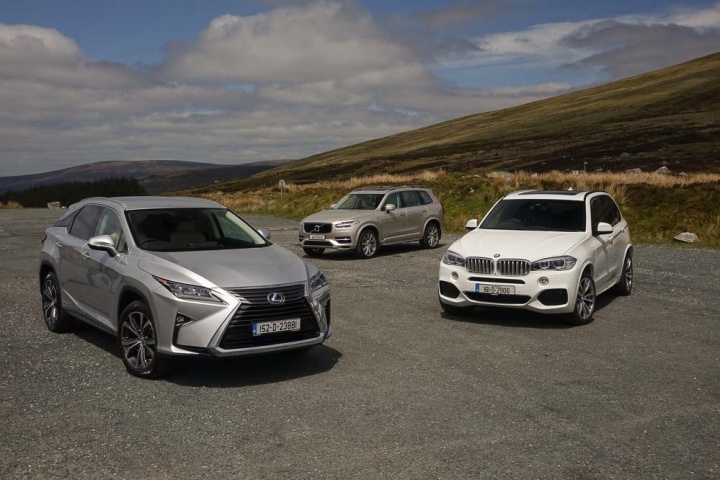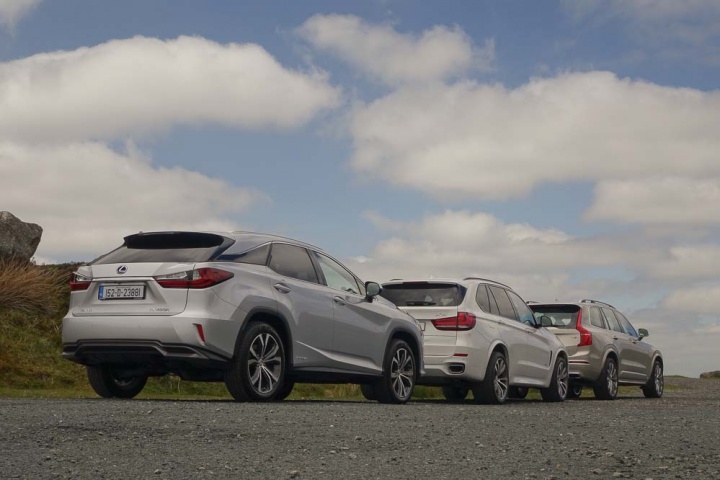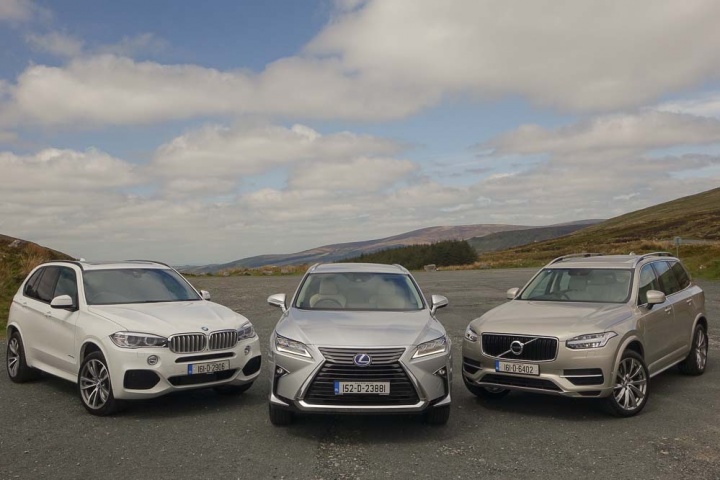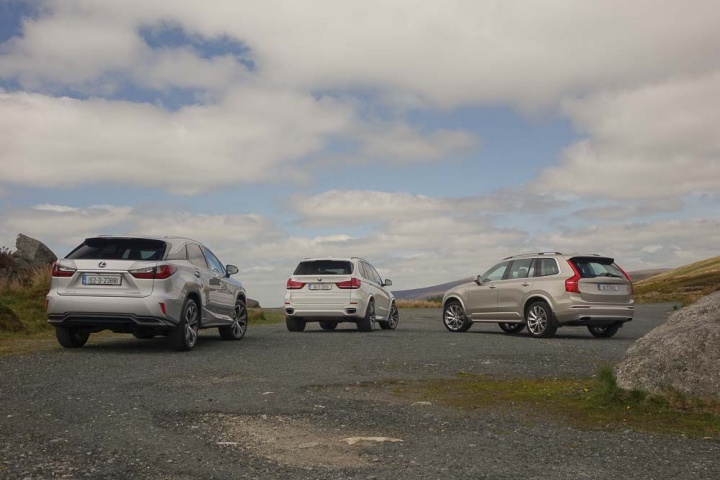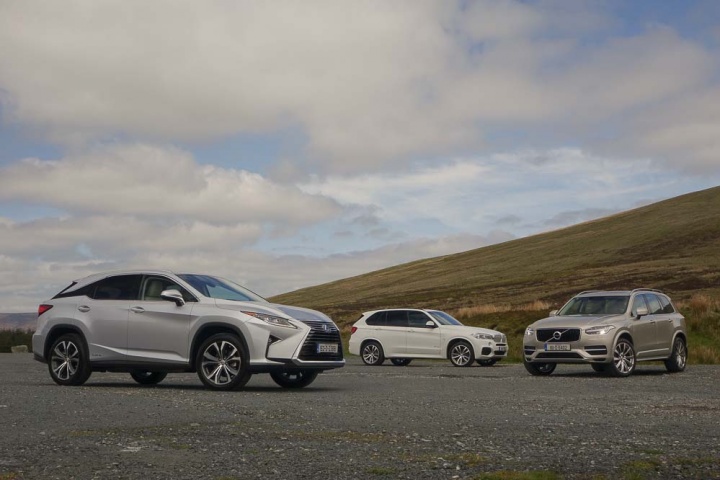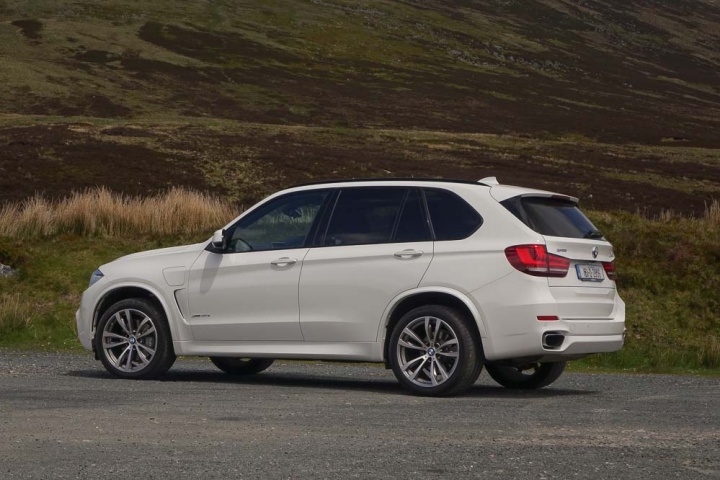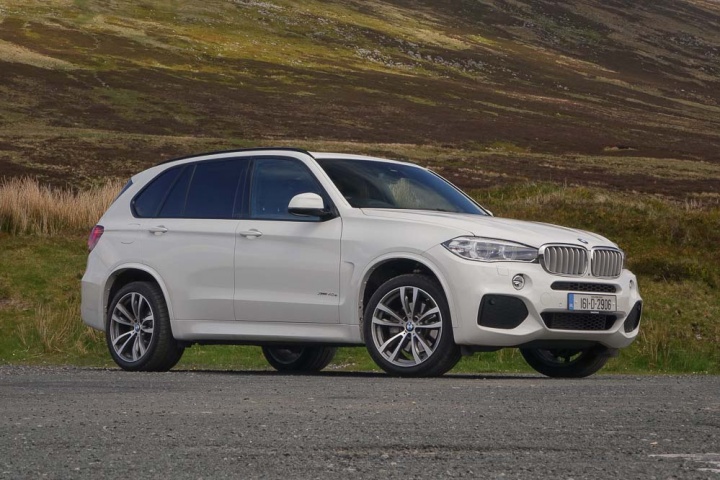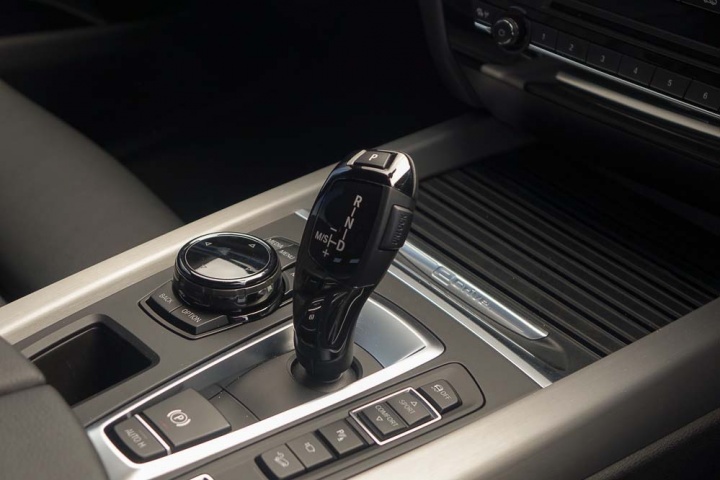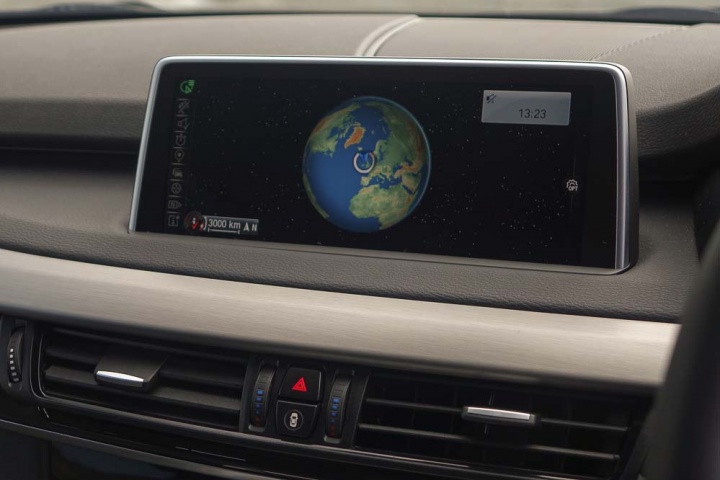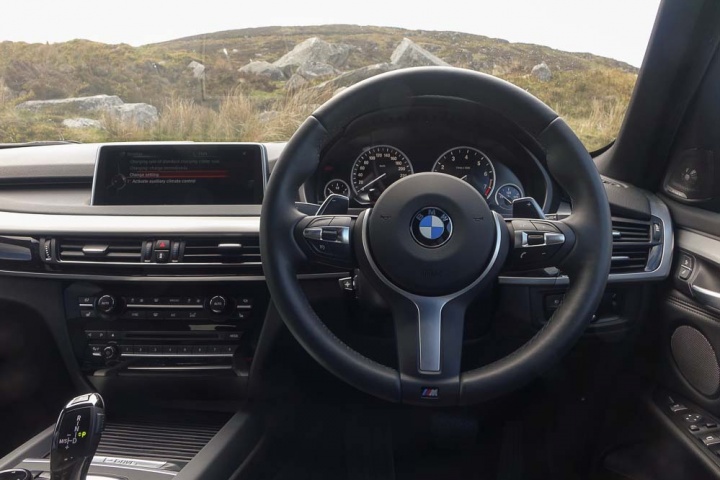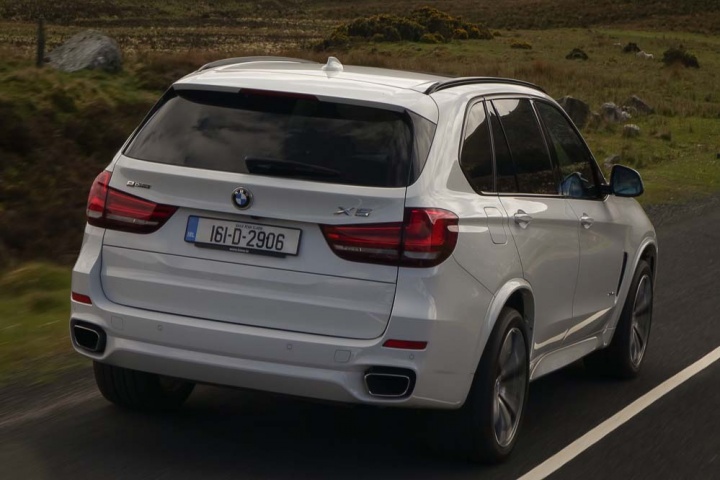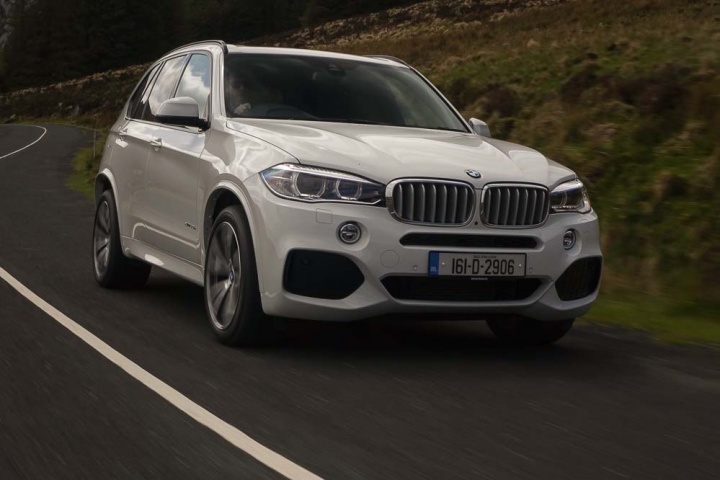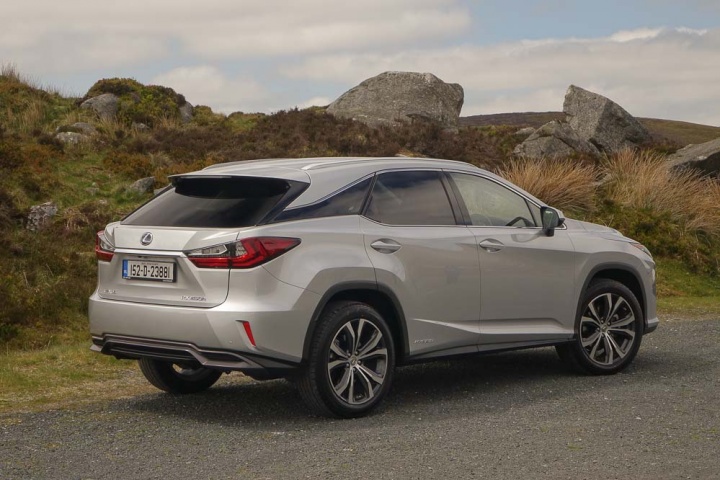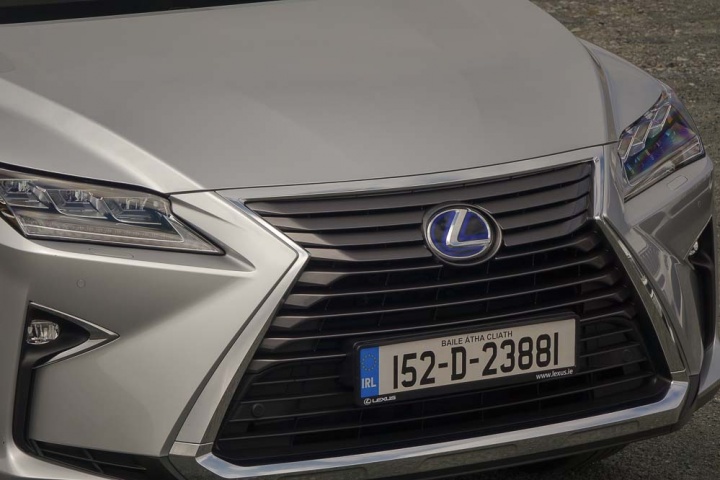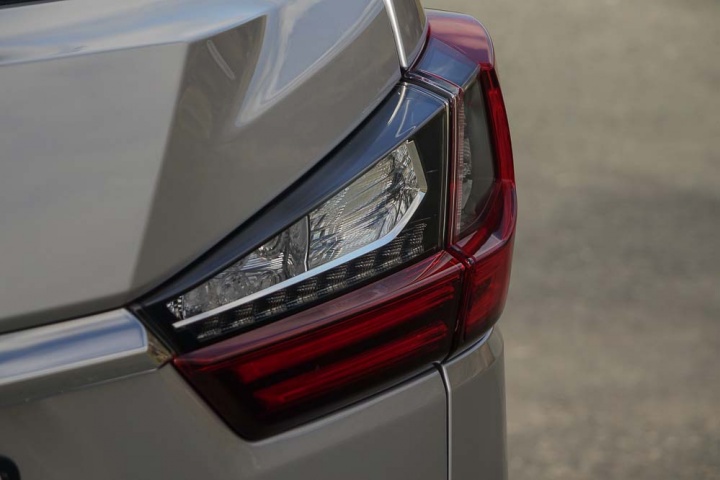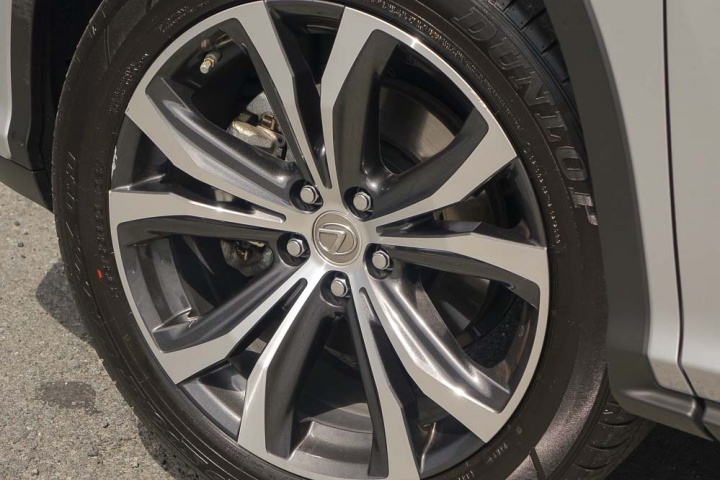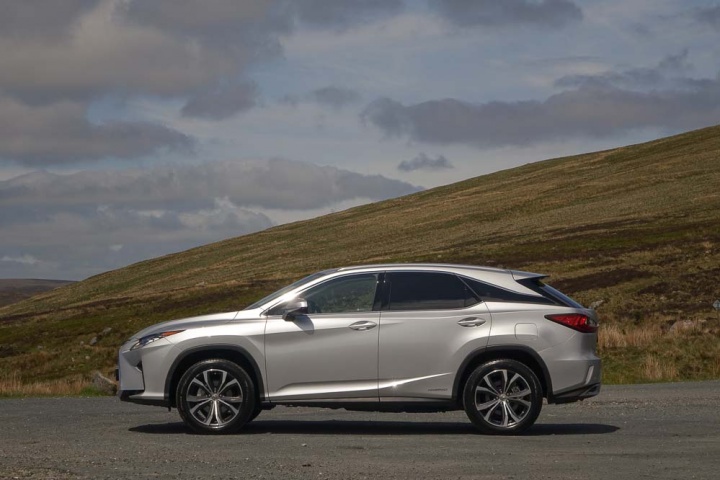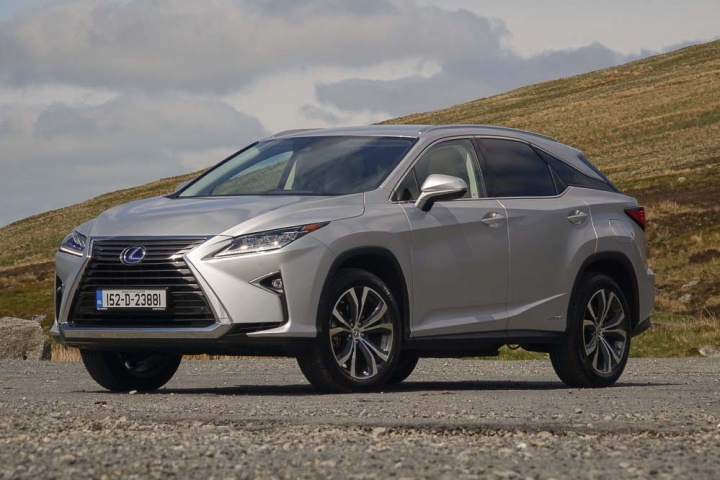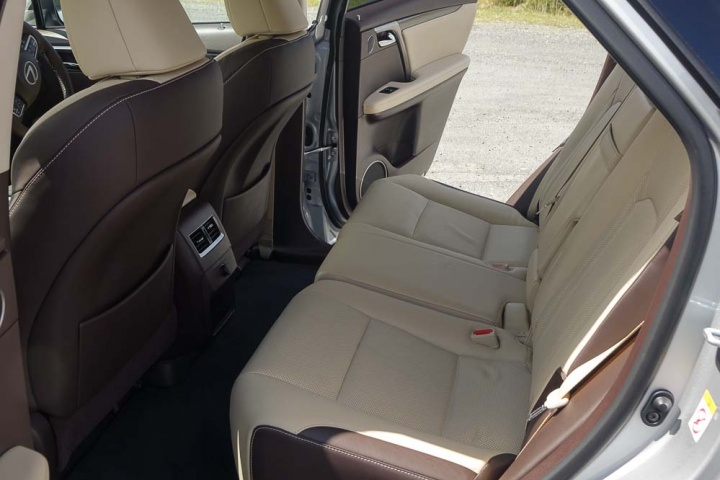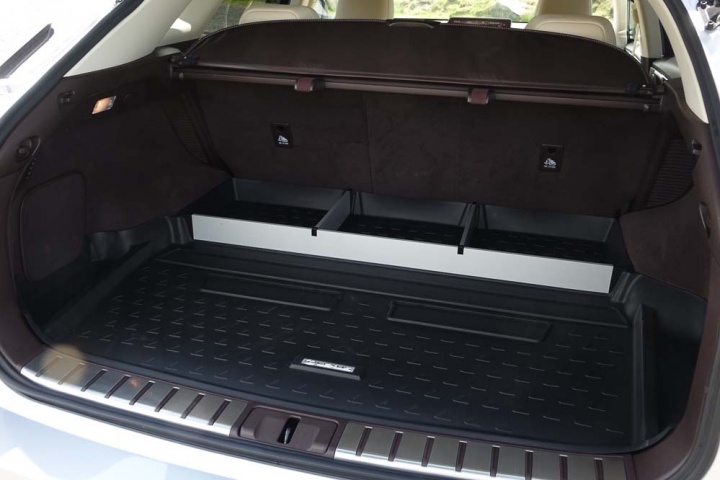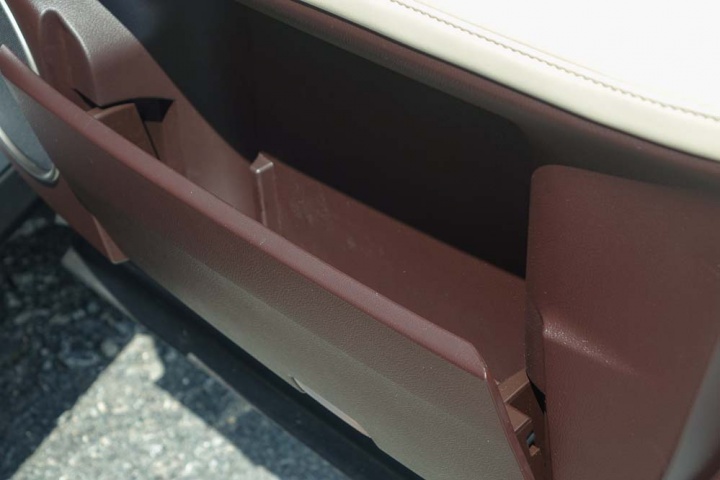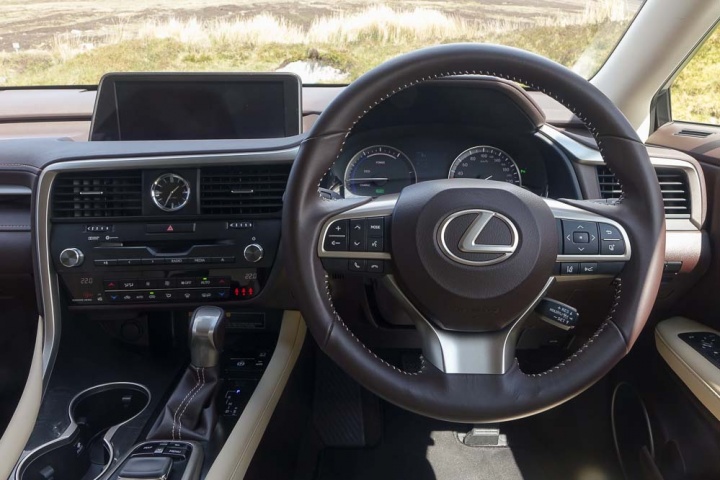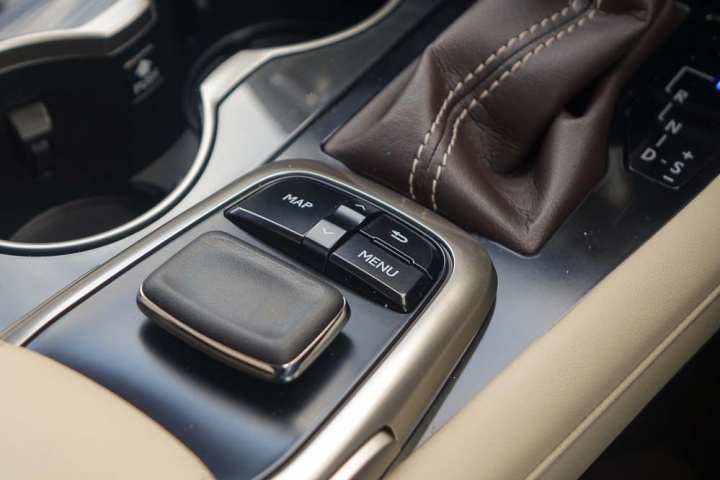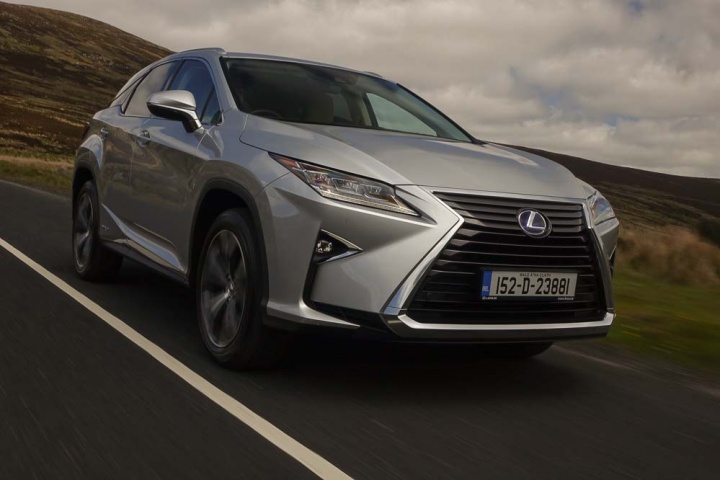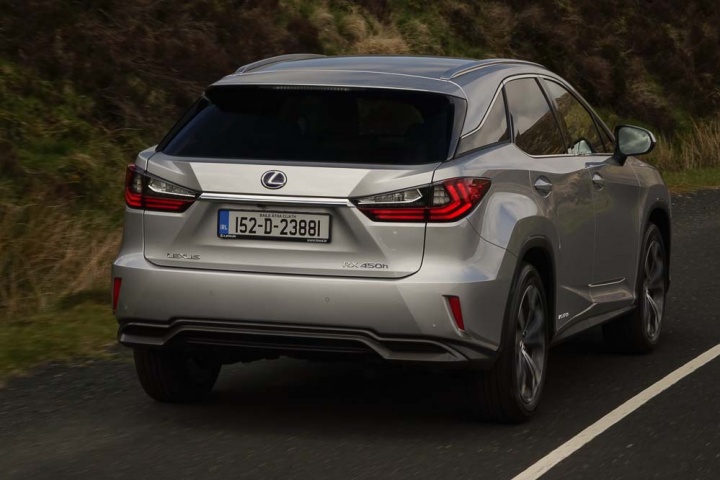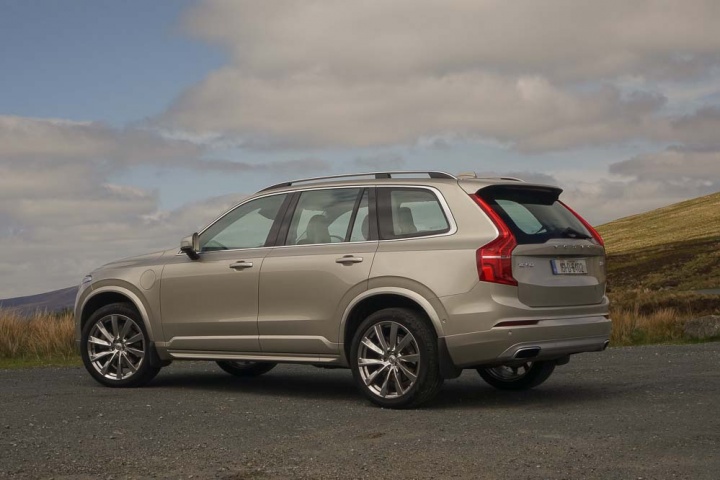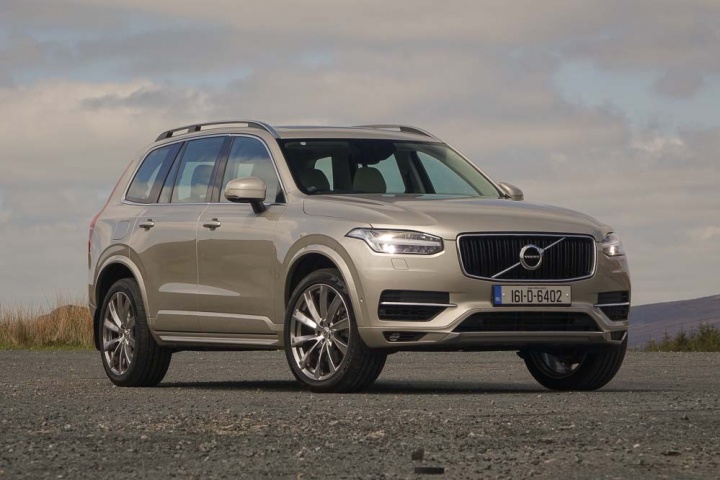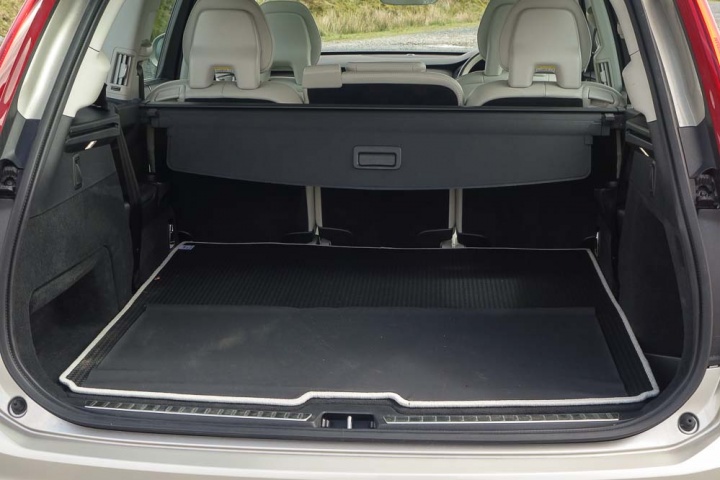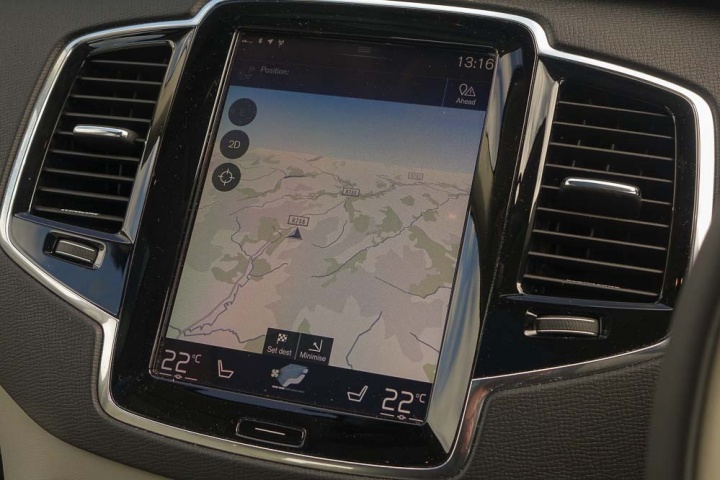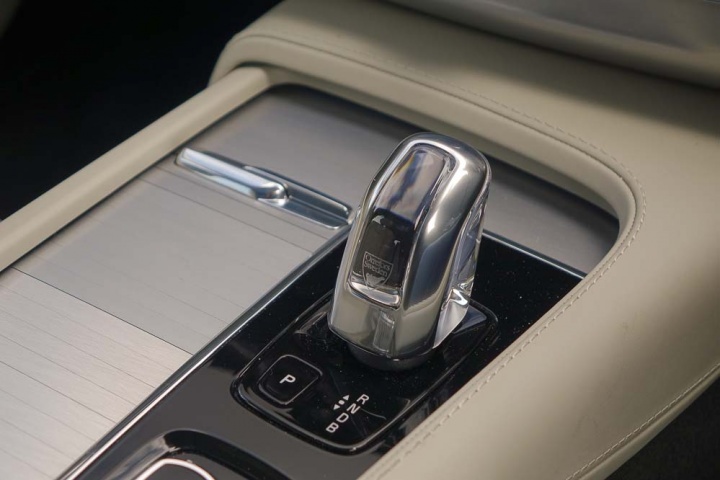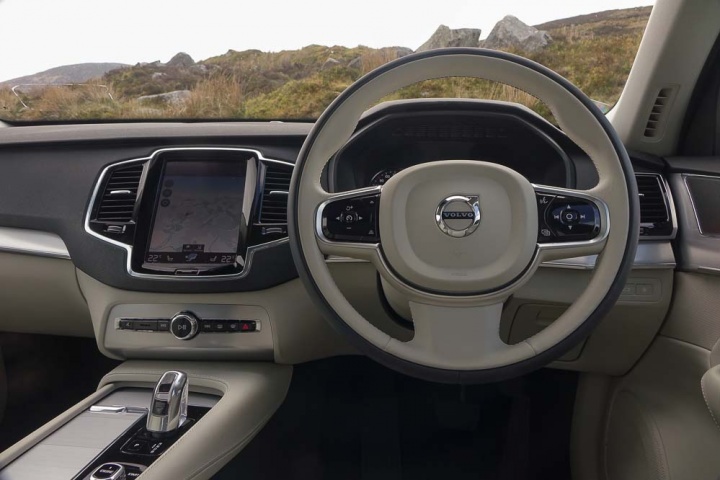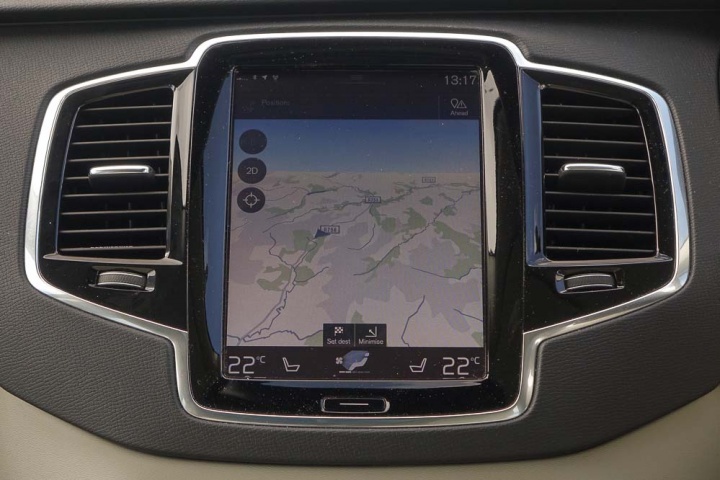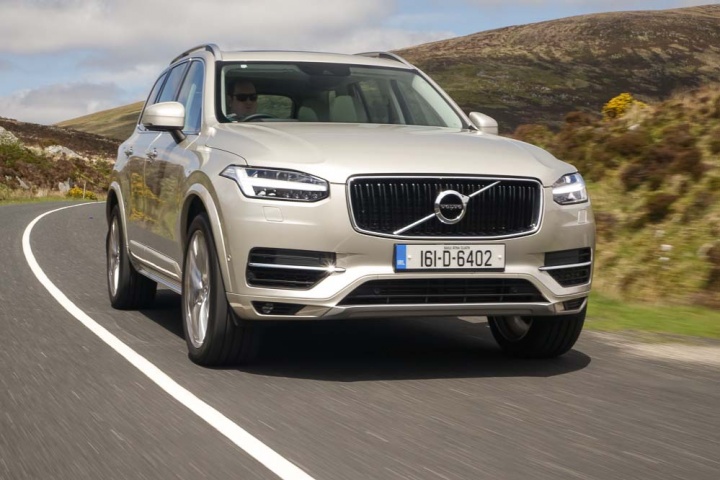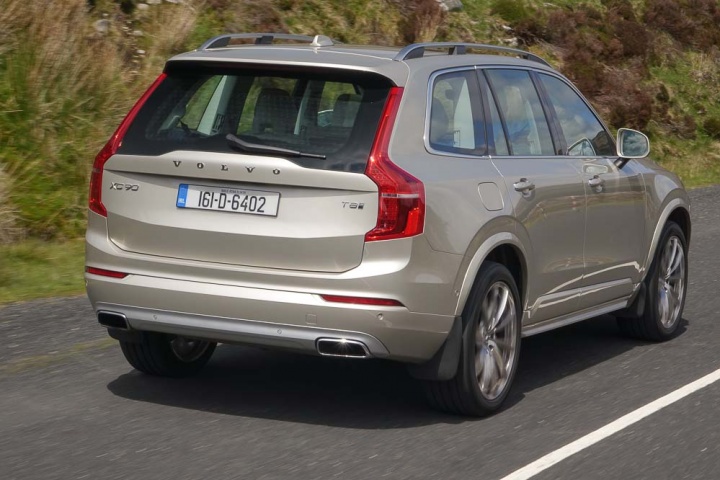Film critic Mark Kermode rails against the 'first-but-wrong' culture in modern media in his fantastic book Hatchet Job. He is talking about films, of course, not cars, but the action of rushing to both a conclusion and a review in an effort to get a piece out online or in print before the competition does is something of an increasingly unpleasant development in the modern world of writing and journalism. Kermode writes of the famed film reviewer Joe Morgenstern who, upon a first viewing of 1967's Bonnie and Clyde, hated the movie. Weeks later, seeing the film again, this time with an audience, Morgenstern realised he'd made a mistake and felt a cold sweat of anguish breaking out on his neck. Then he did something remarkable. He reviewed the film again, retracted and apologised for his earlier misreading of it and proclaimed it as the masterpiece it most certainly was.
On a much smaller scale, in a much smaller way, I'm about to do the same thing with the Lexus RX 450h. When I first drove it, late last year, on mostly mountainous roads in the south of Portugal, I hated it. Hated its whining CVT transmission, its soft suspension, its vague steering and its obvious thirst. More sophisticated plugin-hybrid rivals, I opined, would flatten it and its old-school nickel batteries and no plug.
So now, we've come today to the Wicklow mountains, with the same RX 450h I originally panned, and stuck it alongside two of those more sophisticated rivals - the BMW X5 xDrive40e and the Volvo XC90 T8 Twin Engine. Both have modern lithium-ion battery packs, which are more energy dense than Lexus' older-style batteries, and both can be charged from the mains for a circa 50km electric-only driving range. The RX has no plugin function, can run for only around one or two kilometres on just battery power and its otherwise-impressive 122g/km emissions rating is rather out-done by the Volvo's sub-50g/km and the BMW's 77g/km number. It's all looking a bit bad for the Lexus.
Mind you, it would be hard to look anything other than bad when ranged against the might of the BMW and the Volvo. The X5 we know and basically already love. In diesel form it is sharp and responsive to drive, gorgeously appointed and spacious inside and generally pretty frugal in daily use. Adding batteries and a low-low CO2 figure to that recipe should be nothing but brilliant, right?
But if we love the BMW, then in the Volvo's case we're swinging in through the window with a box of Milk Tray under our arms. The XC90 has received little but adoring plaudits since its launch, and this T8 plugin model has always been one of the stars, not least because it's the only one here to be able to mix hybrid power and full seating for seven people. The BMW loses its optional third row seats to find room for its batteries, while the Lexus can't be had as anything other than a five-seater.
All three are very handsome cars. The BMW doesn't stray far either from its predecessors nor the Munich styling template, but even in dazzling white paintwork, it looks attractive and just a touch glowering. The Lexus is far, far madder at which to look - all angles that start and go nowhere and surfaces abutting like a Picasso painting of a stealth fighter. Yet it somehow works. Jarring it may be but there's an undeniable chutzpah to the way the RX looks and I for one can't help but be beguiled by it.
I think it's safe to say that the Volvo is the best looking, though, even in the metallic beige of our test car, it has soft, gently rounded surfaces that could look amorphous, but with that big grille and those gorgeous headlights, it manages to look striking without looking aggressive.
It also has the best interior, albeit that comes with a caveat or two. We love the smart-looking digital instruments, and the huge iPad-style touchscreen in the centre of the dash is the best example of a button-less interior this side of a Tesla Model S. Added to that it feels the most spacious inside and certainly the most airy - those big windows give it the air of a conservatory, whereas the other two feel darker and more oppressive inside, especially in the back. Partly that's down to colour schemes, but mostly it's just that the Volvo is impressively roomy. There are flaws though. Although the detailing inside is superb (the crystal gearstick, the little Swedish flags sewn into the seams of the front seats), the quality is a touch worrying. It all feels well made to the eye and fingertip, but the XC90 creaks and squeaks somewhat alarmingly over bumps. This car had high-ish mileage compared to the other two, but it doesn't bode well for the car's longevity if it sounds like that already.
By contrast, the Lexus' interior looks, feels and sounds like a leather-swathed bomb shelter. You half expect to peel back a soft, buttery leather surface and find re-barred concrete underneath. There are a few clunky buttons, the graphics on the (enormous) 12.3-inch infotainment screen look cheap and the mouse controller is just awful, but the Lexus cabin rises above such concerns and proves magnificent. It has even better seats than the Volvo, the leather and even the plastic panels both look and feel fantastic and while it lacks seven seats there is at least plenty of space for the five people you can carry.
The BMW's cabin looks a little more ordinary by comparison, but that's partly down to the fact that so much of it is shared with so many other BMW products. It's still beautifully made, enormously comfortable and has a terrific infotainment system.
And where the BMW pulls out a clear lead over the other two is in its handling. Heading up the mountain road out of Glendalough, we could just as easily have been driving a 5 Series saloon - the way the X5 controls those big, heavy wheels, the way it keeps its body flat and composed in corners and the way its ride quality, although firm, recovers from any movement so quickly and so cleanly is quite simply remarkable. When you remember the sheer weight and heft that it is controlling, it is little short of jaw-dropping.
The Lexus, by comparison, is all at sea. With its soft springs, over-light steering and hefty V6 engine stuck up in the nose, it just wallowed and rolled and generally felt like a canal boat caught in a mid-Atlantic cyclone. A handling champ it is not, but when you get it back on to more sensible roads, such as on the motorway or around town, the Lexus is simply peerless - it's actually slightly more comfortable than the couch in your house.
The Volvo splits the difference between the two. Its steering is as short on feel as that of the Lexus, but it's more responsive on turn-in and, given a quarter-second to let the weight transfer settle on the suspension, corners with some verve. Its ride quality initially feels worse than that of the BMW (and way worse than the Lexus), but then you realise that actually it's about as good at absorbing bumps as the Beemer, but it doesn't recover as quickly and the suspension itself is noisier, adding to the cacophony of squeaks and rattles coming from the back.
Nonetheless, overall, the Volvo proves the most pleasant to drive. It can't match the BMW's sharpness of chassis, but the X5 xDrive40e has truly awful steering - incredibly for a Munich product. Over-light in 'Comfort' mode, it weights up a bit in 'Sport', but always feels rubbery and less than linear. The Volvo's steering is definitely the sweetest here, and beyond that it's just a lovely thing in which to travel. You look forward to long journeys in the Volvo, thanks to its relaxed mien and gorgeous cabin. You'll have more fun in the BMW and be more relaxed in the Lexus, but overall the Volvo is the one you'd choose.
It does not have the best drivetrain though. The T8's specs are impressive. It has an engine that uses both supercharging and turbocharging to achieve 320hp and then adds 80hp on top of that with its electric motor. A figure of 400hp is what the BMW M5 had not so long ago, so performance, if you dial up the Sport mode on the screen, is simply amazing - that 6.4-second 0-100km/h punch is just addictive.
It's not good to listen to though. The Lexus' 3.5-litre V6 may occasionally still rev too high and too long thanks to its CVT gearbox, but it's a crisp, sexy sound all the same. The BMW uses a 2.0-litre turbo petrol engine, like the Volvo, but it manages to sound better than the Swede as well, with a sharp four-cylinder snarl that sounds almost like a Golf GTI.
It's an odd powertrain, though, the BMW, with power flooding suddenly in as soon as you breathe on the throttle pedal, which can sometimes make progress quite jerky. It has none of the smoothness that you expect from part-electric cars. That you do get with the Lexus. A V6 engine is always going to be more naturally smooth than a four-pot, but the relaxed, easy-going power delivery makes the RX 450h much easier to drive, especially around town.
You will be expecting this to be the point, though, where the BMW and the Volvo deploy their more cutting-edge technology and march off into the plugin sunset together, leaving the Lexus, whose V6 and hybrid system have not fundamentally changed in more than a decade, well behind.
Don't turn the digital page just yet...
Would it surprise you to learn that all three vehicles returned roughly the same overall fuel consumption figures during our day with them testing back-to-back? All three, in normal driving, and with charged batteries depleted, will return in and around 9.0 litres per 100km. That's 31mpg, which is a long, long way from the official 104mpg of the Volvo and 85mpg of the BMW, and a slightly less long way from the Lexus' 54mpg. You will see higher spikes on certain journeys and all three will probably give their best around town, where their hybrid systems can be deployed to best effect. Obviously, if most of your mileage is urban, and you have the facility to plugin and charge overnight, then the Volvo and the BMW will be able to do many of their driving tasks on zero emissions and zero use of petrol, but actually, around town, the Lexus spends a surprising - and pleasing - amount of time reverting to battery power. The others will drain their batteries all at once, while the Lexus will constantly top its power pack up. Six of one, half a dozen of the other, really and while the technological advantage certainly lies with the BMW and Volvo, the Lexus ease of use (no need to worry about plugging it in or finding a charging point when you're out and about, which you really do feel you ought to do with the other two) does bridge the futuristic gap somewhat. And that's without considering the implications for reliability. Lithium-ion batteries are relatively new technology and are often still shown up by unreliability and overheating issues. Almost two decades of Prius hybrids running happily about shows that Lexus' faith in its caveman batteries is well founded...
It would be tempting, if only to give full vent to Hubris, to award the Lexus the overall win in this test. It's fantastic to look at, to sit in and as a motorway companion, its eerie cabin silence and mechanical refinement make it the weapon of choice for longer journeys. But it's not quite there. Lacking seven seats, and lacking even the option to charge up its batteries for short, electric-only hops, it finishes second.
The BMW comes third. Its technology is hugely impressive, and it's by far the best to drive, but the rubbery steering is a huge disappointment, and you can't have it with seven seats with hybrid power.
Which leaves the Volvo in first place. We still harbour concerns about all those squeaks and rattles, although picking slightly smaller alloys and tyres with taller sidewalls might well quell the worst of that. But it still has the best cabin, the coolest infotainment system and, in spite of the harsh noises coming from its petrol engine, it's the nicest car overall in which to travel, not least for those sitting in the back.
Second opinion - Shane O' Donoghue
I organised this triple test thinking that the Volvo would completely walk away with it, but thought it'd be an interesting exercise all the same. How wrong I was - on the first count anyway. The XC90 remains a brilliant car. I love the cabin design, material selection and space, the huge boot (only one here with seven seat) and the technology that is packed in. Against the BMW and Lexus, however, it's surprisingly lacking in refinement and you can hear the various components of the hybrid system at work more than I'd like.
The BMW betters the Lexus and Volvo in its dynamic abilities (horrid steering feel aside), with iron-fisted body control where the others are lolling around the place. It's the only one that can be driven quickly without feeling outside its comfort zone. The Volvo isn't far behind, but it always feels heavy, while the Lexus has a chassis very much biased towards comfort. And you know what? So long as you don't care about cornering prowess, it's all the better for that. The luxury car feel is enhanced by incredible refinement and a gorgeous - and spacious interior (as Neil said, not faultless, but still great). The Lexus sounds better than the other cars too, when you can hear its engine that is.
It probably still isn't clear which I've chosen as a winner, is it? That's because each car probably appeals to different types of buyers. My conclusion comes with a caveat, and that's the fact that a diesel version of the X5 or XC90 would probably suit more Irish drivers than any of this trio. But that aside, this verdict is for those that have decided that a petrol-electric SUV is for them. Is space and seating for more than five a priority? Then take the Volvo. Love driving on twisty roads? The BMW is your only man. However, taking everything into consideration, I'm going to choose the Lexus as the winner. Its striking styling, outstanding interior, eerie refinement, cushy ride and certain reliability make it the best car overall here. Goes to show that there really is nothing quite like a proper back-to-back test of rival cars to reveal the subtle differences.
Second opinion - Melanie May
I didn't get to spend as much time in the cars as Shane and Neil did, but my first impressions somewhat echo Neil's. I love the origami-like folds, lines and points of the Lexus. It looks futuristic and is eye-catching. The BMW looks like a BMW - we've seen it all been done before. The Volvo is lovely to look at, but it's just very soft and uninspiring.
However, the Volvo's interior wins it hands down for me. It is gorgeous, sumptuous and has some great design features. The finish and function of the cabin are just perfect.
To drive, I found the Lexus the most stable, comfortable and easiest to handle on both the motorway and country roads. It managed the bumps and uneven surfaces really well and was also the easiest to manoeuvre. However, the BMW did feel a lot more powerful and capable than both the Lexus and Volvo, but its engine was also the noisiest, which kind of ruins the experience of a hybrid for me. Whereas with the Lexus you are nearly driving in silence as the cabin is so well insulated and the engine very smooth. The Volvo drove well enough, but didn't stand out. Not too much of one thing and not too little of anything else. Just very average, which is no bad thing.
So the overall winner for me is the Lexus, but can I have it with the Volvo's interior, please?
BMW X5 xDrive40e Tech Specs
Model tested: BMW X5 xDrive40e M Sport
Pricing: €79,040 on-the-road (VRT refund of €2,500) as tested; xDrive40e starts at €72,400
Engine: 2.0-litre turbocharged four-cylinder petrol with synchronous electric motor
Transmission: eight-speed automatic, four-wheel drive
Body style: five-door, five-seat SUV
CO2 emissions: 78g/km (Band A1, €170 per annum)
Combined economy: 85.6mpg (3.3 litres/100km); 15.3kWh/100km battery
Top speed: 210km/h
0-100km/h: 6.8 seconds
Power: petrol 245hp at 5,000- to 6,500rpm; electric 113hp at 3,170rpm; combined peak output 313hp
Torque: petrol 350Nm at 1,250- to 4,800rpm; electric 250Nm at 0rpm; combined peak output 450Nm
Boot space: 500 litres (all seats up, /1,720 litres (all seats folded)
EuroNCAP rating: not tested
Lexus RX 450h Tech Specs
Model tested: Lexus RX 450h Luxury
Pricing: €76,450 as tested; RX range starts at €69,650
Engine: 3.5-litre V6 petrol assisted by electric motor
Transmission: CVT automatic, four-wheel drive
Body style: five-door, five-seat SUV
CO2 emissions: 122g/km (Band B1, €270 per annum)
Combined economy: 54mpg (5.2 litres/100km)
Top speed: 200km/h
0-100km/h: 7.7 seconds
Power: 313hp at 6,000rpm
Torque: 335Nm at 4,600rpm
Boot space: 539 litres (all seats up); 1,612 litres (all seats folded)
EuroNCAP rating: not yet tested
Volvo XC90 T8 Tech Specs
Model tested: Volvo XC90 T8 Twin Engine Inscription
Pricing: €78,700 (inclusive of SEAI grant and VRT refund of €7,500); XC90 range starts at €70,950
Hybrid system: 2.0-litre turbo- and supercharged four-cylinder petrol engine, plus 60kW electric motor
Transmission: eight-speed automatic, four-wheel drive
Body style: seven-seat SUV
CO2 emissions: 49g/km (Band A1, €170 per annum)
Combined economy: 104mpg (2.7 litres/100km)
Top speed: 230km/h
0-100km/h: 6.4 seconds
Power: 400hp at 5,700rpm (engine - 320hp, electric motor - 80hp)
Torque: 640Nm at 2,200- to 4,500rpm (combined system)
Boot space: 310 litres (all seats up) to 1,899 litres (all seats folded)
EuroNCAP rating: five stars; 97 per cent adult, 87 per cent child, 72 per cent pedestrian, 100 per cent safety assist


